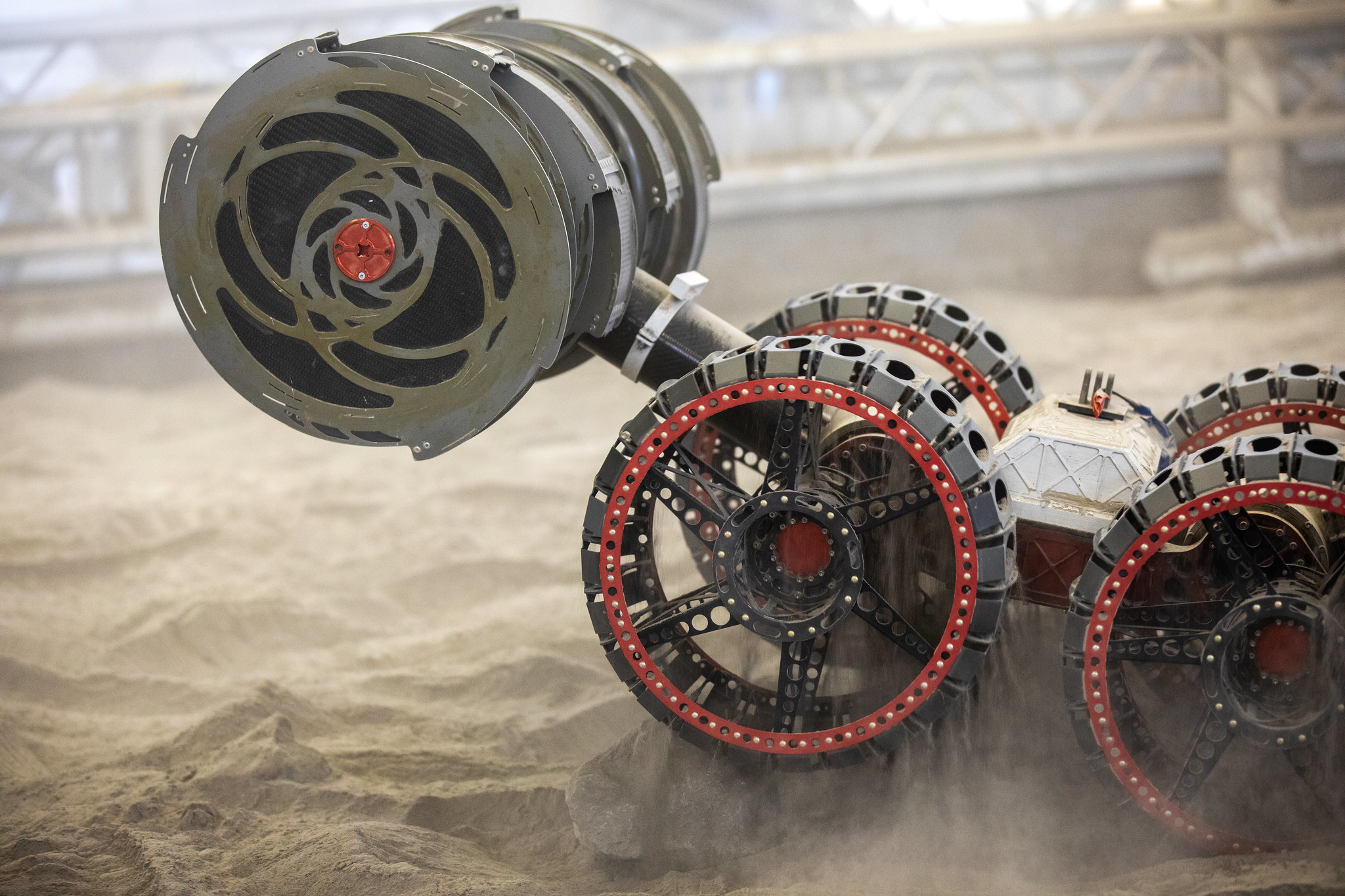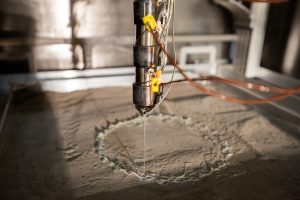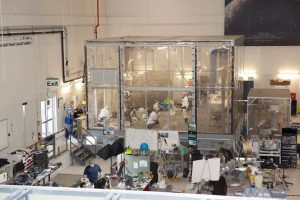
Granular Mechanics and Regolith Operations (GMRO)
The Granular Mechanics and Regolith Operations Laboratory (GMRO) studies the mechanics of materials in a launch pad environment, especially the mechanics of soil at Lunar and Martian spaceports; how to excavate the soil to prepare berms, landing pads, and roads; how to model the blowing of soil or other materials in a rocket exhaust plume to predict the blast effects. It also develops technologies for handling Lunar and Martian regolith, including excavator technologies, pneumatic transport of soil, and magnetic handling of soil. It studies the basic physics and geology of Lunar and Martian soil in order to support soil-handling technologies, including the particle sizing, particle shapes, bulk mechanical properties of the soil, soil compaction, field sampling technologies, and laboratory testing protocols. Another focus of the GMRO is advanced manufacturing methods using regolith for 3D Additive Construction technology development, sintering regolith materials and digital manufacturing of voxel elements. The GMRO lab develops robotic technologies to support surface systems and operations on planetary bodies, moons, asteroids and comets. Robotic construction and site preparation technologies are actively being pursued in support of future NASA missions.


Capabilities
- Two regolith test bins, one with 120 tons of BP-1 simulated extraterrestrial soil (25’x25′ area 3.5′ deep) and one with 2 tons of JSC-1a simulated extraterrestrial soil (calibrated dusty environment measurements, dusty mechanisms testing)
- Fine Particle Analyzer (FPA), sieves & shaker, and soil compressor.
- A complete complement of soil mechanical testers (proctor compactor, limit devices, vibration table with relative density set, triaxial shear tester, direct shear tester, consolidation tester, permeation cells).
- Rocket plume testers, penetrometers, coring devices, hand-held testers, ultrasonic bath, drying oven, several furnaces, wet/dry sieving, dehumidifier, microscopy, hydrometer test set, cameras, high speed camera, video graphic analysis, dust hood, sandblast hood,3.6Ghz Spectrum Analyzer and Millimeter Wave Doppler Radar for estimating dust ejecta velocity.
- Fanuc Industrial Robot
- UR10 robot arm
- Kuka Industrial Robot Arm
- 3D printers (3 Lulzbots, 3 Ultimakers).
- Multiple high end computer workstations with physics simulation software (PFC2D, PFC3D, EDEM, Mathematica, LabVIEW, custom software in Fortran, COMSOL with various add-ons).
- Rapid prototype capability including CNC router, 2 CNC mills, lathe, band saws and shop area.
- Collaboration space with large video wall, outdoor assembly area.
- Multiple cryogenic temperature dusty environmental chambers.
- State of the art actuator testing capabilities (down to 1 millitorr vacuum, 40 Kelvin temperatures, input and output feed throughs, over 300 Nm torque inputs, efficiency measurements through torque transducers, real-time tooth decay measurements)